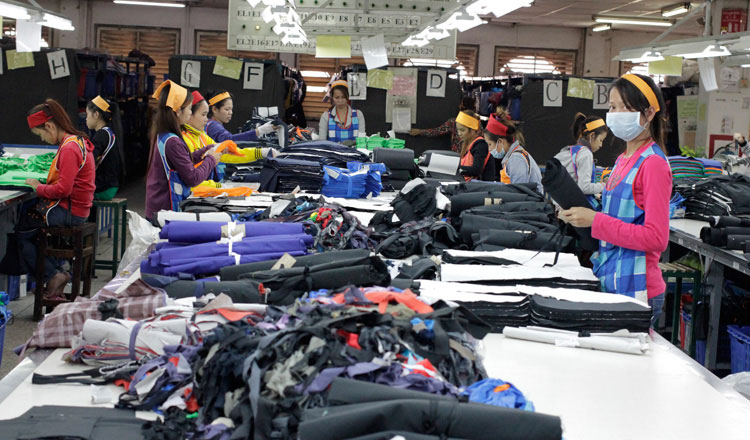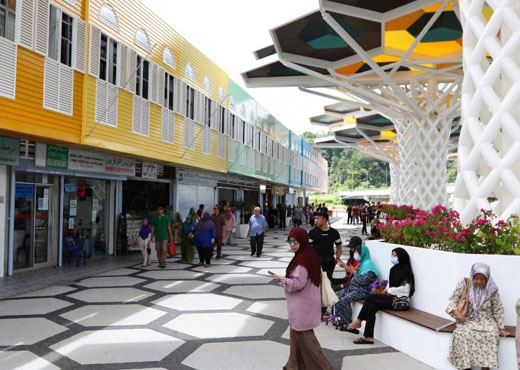Huawei Technologies (Thailand) Co., Ltd., in cooperation with Bangkok Post Public Company Limited, ASEAN Foundation, and over 60 ICT industry partners across Thailand, organised “Powering Digital Thailand 2022: Huawei Cloud & Connect” in conjunction with Asia-Pacific Innovation Day, in a hybrid format comprising onsite exhibitions and online broadcast from 17-19 November 2021, at Convention Centre, 22nd floor, Centara Grand at CentralWorld.
Carrying on the same theme from last year and featuring many keynote industry speakers, exhibitions, and a hands-on lab, the event delves into how digital technologies can unlock new potentials, markets, and business models while also supporting post-pandemic economic recovery in Thailand and the Asia Pacific region. Furthermore, it thoroughly explores practical applications of Cloud, 5G, AI, and Digital Power technologies in industries through digital transformation, especially Thailand’s agriculture, manufacturing, and renewable energy sectors.
In a welcome speech by Guo Ping, Huawei Rotating Chairman, he expressed his strong belief in post-pandemic economic recovery and digital economic growth in the region, saying, “Digital technology, especially 5G, Cloud, and AI, will surely become a pillar for economic recovery and resilience in many countries. We plan to invest $100 million over the next three years to help build a startup ecosystem in the region. We believe all countries in the Asia Pacific region will succeed in their push to go digital. We will extend our roots deeper and do our part during the region’s ten golden years of digital transformation.”
General Prawit Wongsuwon, Deputy Prime Minister, opened the event, stating that, “Digital technology is crucial to Thailand’s digital economic development, post-pandemic recovery, and social well-being. The collaboration between government and industry to integrate technologies and move the country forward will enhance business potential, government efficiency, and Thailand’s sustainability.” Chaiwut Thanakamanusorn, Minister of Digital Economy and Society, said, “Under strong policies to develop the national digital economy and technology, Thailand’s digital infrastructure and data economy have taken great strides in the past several years. We believe that Thailand’s digital economy can reach 30% of the country’s GDP by 2030, or even earlier. In this endeavour, we look forward to continue working with Huawei and deepen our collaboration to use innovation in promoting Thailand’s digital economy.”
Lin Baifeng, President of Huawei Asia Pacific, emphasised that, “As one of the most populous and diverse regions in the world, Asia Pacific is marching to the forefront of the global digital landscape. With over 20 years of partnership with and contributions to the region, Huawei is committed to supporting Thailand and the region’s digital vision in three key areas: Connectivity and Intelligence, Low-Carbon Development, and Digital Inclusion Initiatives.”
Dr. Le Quang Lan, Assistant Director, Head of ICT and Tourism Division, ASEAN Secretariat, commented on the Asia-Pacific Innovation Day activity, “The power of digital economy lies in its ability to enable companies to scale their business models throughout the region, and a common approach for digital transformation should be adopted throughout the Asia Pacific region.” Abel Deng, CEO of Huawei Technologies (Thailand) Co., Ltd., addressed digital transformation trends and Huawei’s mission in the Thai market, saying, “We are inspired to see Thailand become a leading digital force in the ASEAN region. Huawei is fully committed to supporting Thailand in becoming ASEAN’s low-carbon leader, and we are confident of achieving this goal together.”
In the event, discussions through the perspectives of various industry leaders echoes the spirit of technology transformation and empowerment, covering Thailand industry 4.0 in the post pandemic era, low-carbon business, digital economy, digital content production, digital healthcare, financial service innovation, digital education, digital tech ecosystem, disruptive retail , autonomous and AI solutions, and carbon neutrality.
One of the most exciting innovations showcased at the event is Huawei’s introduction of its Digital Power Business to Thailand. The showcase focuses on developing clean energy to replace fossil fuels through digital and power electronics technology and driving low-carbonisation, electrification, and intelligentalisation such as Smart PV & Battery Energy Storage, Intelligent EV Charging Network, Smart Data Center Facility, and Green Site Power Facility. Currently, it is providing services to over 1000 customers and partners in Thailand.
Another highlight of the exhibition component of the event is Cloud Tractor Training, where visitors can experience a tractor training course enabled by a low-latency 5G network and cloud rendering server. This innovation can be implemented by Thai farmers to improve and optimise their cultivation of agricultural produce.
The event is also highlighting inspiring business cases and solutions related to digital transformation. This includes how to develop a green, low-carbon, and open ecosystem split across three areas. The first area is “Redefine Infrastructure” which showcases how 5G, Cloud, and AI technologies can converge across all industries to unleash new value. The second area focuses on “Industry Digital Transformation” including Smart Transportation, Smart Campus, and Smart Finance. The third area exhibits major global partners and businesses that are collaborating with Huawei to build a prosperous ecosystem for the intelligent era.
Another event highlight is the Intelligent World 2030 White Paper which cites upcoming technological trends from Huawei to look out for, including Cloud, 5G Bullet Time, Cloud and 5G VR Gaming, Smart Healthcare, Smart Finance, and Smart Education.
For IT managers, cloud engineers, data scientists, developers, and solution architects, Huawei Cloud experts organised the hands-on lab course offering technical and practical sessions as well as skills development workshops for deploying and operating cloud computing technology. The topics include cloud container engine, AI and machine learning, enterprise intelligence and data platform, and service migration.
Finally, the second Huawei Cloud Developer Competition in Thailand was showcased at the event under the theme of “Creating value for Thailand and society; for a better future for this beautiful country.”
Source: The Bangkok Post

























